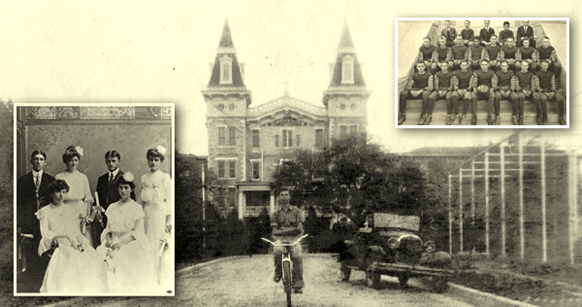History of TSD

Historical Perspective
1856 –
Oldest Continuously Operating Public School in Texas
The Texas School for the Deaf ’s campus in Austin is older than the State Capitol just up Congress Avenue. Founded in 1856 by the Sixth Legislature, the Texas School for the Deaf is the oldest continuously operating public school in Texas. The school, then called Texas Deaf and Dumb Asylum, was appropriated $10,000 for the biennium. The current 67.5-acre site on South Congress Avenue is the site of the original campus. TSD has been through a number of dramatic changes over the years.
1876 –
State Printing Office Established
Significant historical events include the establishment of a state printing office at the school in 1876, the first ten-year course of study for graduation in 1887 and the construction of a new vocational and education building in 1900. The school’s enrollment and building projects continued to grow from 1900 to 1945. During this time, science and library facilities were built and the number of teachers increased from 14 to 44. Today, the school’s printing is done on an industry standard state of the art digital printer. Student curricula has also expanded to include web design, digital animation and graphics. The school’s historic Lone Star magazine is printed at TSD by students.
1949 –
Recognition as Educational Institution
In 1949, the School was placed under the newly created Board for Texas State Hospitals and Special Schools, and the official name of the School was changed to the Texas School for the Deaf. In 1951, after almost a century of effort to identify TSD as an educational institution, the Legislature directed that the State Board of Education would govern the schools.
1965 –
East Campus Begins
In 1965, the state schools for the blind and the deaf were combined under a Directors of Special Schools for the State of Texas. Also in 1965, the Texas Deaf and Blind and Orphan School for Colored Youths on Airport Boulevard integrated its students with the special schools. This facility became TSD’s East Campus, which was occupied by TSD students through the 2000-2001 school year, when it was sold to the City of Austin.
Regional Day Schools Established. In 1973, Senate Bill 803 established the Regional Day Programs for the Deaf in Texas. These programs were under the Texas Education Agency and were designed to serve deaf and hard of hearing students within local public school districts.
1979 –
Governance to Local Board
In 1979, the Legislature transferred the responsibility of governing TSD from the State Board of Education to a nine-member Board of Trustees appointed by the Governor and confirmed by the Senate. The Board was directed to organize and conduct itself like an independent school district board of trustees. The TSD Board must consist of 51% deaf individuals and include parents, alumni and professionals in deafness. Today, the Board and the Superintendent of TSD are a cohesive leadership team.
1980s –
Major Facility Construction
In the late 1980’s, a decision was made to consolidate TSD’s two campuses and a plan to design 458,000 square feet of new construction began. From 1990 to present, TSD has been engaged in a major facility construction plan. One reason for the $65-million dollar appropriation by the state Legislature was a sense that the School for the Deaf facilities were both outdated and inefficient. Another reason was the hope that consolidating the campuses would save money—one campus would need one health center instead of two, one security department, one maintenance department, and one cafeteria. Barnes Architects of Austin was hired to design the campus, and in 1999, their design was one of five top winning designs in the state.
2006 –
Sesquicentennial Milestone
In 2006, TSD celebrated its Sesquicentennial marking 150 years of quality service to the state’s deaf and hard of hearing students and their families. A series of celebrations were held across the campus, and a historic landmark marker was placed at the entrance to the campus on South Congress Avenue.
